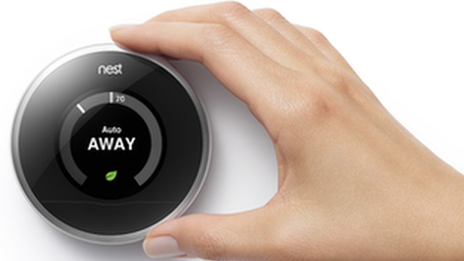Nest reveals tie-ups with Jawbone, Mercedes and others
- Published
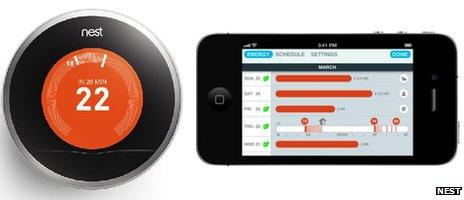
Nest's thermostat will have the ability to communicate with other products
Google's Nest division is to allow its "smart" thermostats and smoke alarms to communicate with third party products.
Initial tie-ups include letting Mercedes cars and Jawbone Up wristbands turn the heating on, and allowing Lifx's wi-fi connected light bulbs to flash red if smoke is detected.
Nest's co-founder Matt Rogers told the BBC that users would have control over which link-ups were allowed.
But one expert warned that hackers might try to exploit the facility.
"You don't want to get woken up at 04:00 by a smoke alarm because of malicious activity," said Dr Ian Brown, from the Oxford Internet Institute.
"Google in general are very good as internet security goes, but it will be very interesting to see how long it might be before the first vulnerabilities are found in these systems."
Although Nest is opening up its application program interfaces (APIs) - the code that controls how the different software programs interact - to "anybody" via its website, Mr Rogers said steps had been taken to restrict rogue developers.
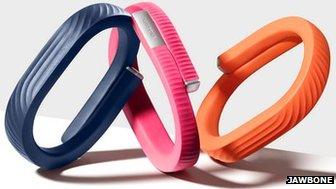
The Jawbone wristband can let the thermostat know when its wearer is waking up
"We still have the ability to deactivate their accounts and basically delete all their integrations," he said.
"We have also put a limit in the developer programme of how far they can get without actually having to go through some approval processes.
"They can go up to 1,000 users without having to talk to us... but over that they have to get formal approval and go through a testing process."
Connected home
Google bought Nest for $3.2bn (£1.8bn) earlier this year despite the fact it only had two relatively niche products on sale.
The search firm's chairman Eric Schmidt described the acquisition, external at the time as "an important bet" on intelligent devices for the home that were "infinitely more useable" than existing kit.
Others are also making early steps into what is being called the "internet of things":
LG has released fridges and ovens that can be controlled by text messages
Samsung allows its Smart Home air conditioners, fridges and washers to be controlled remotely by apps on its smartphones and smartwatches
Apple has unveiled HomeKit - a suite of tools to allow devices running its forthcoming iOS 8 mobile operating system to control third party smart-home gadgets
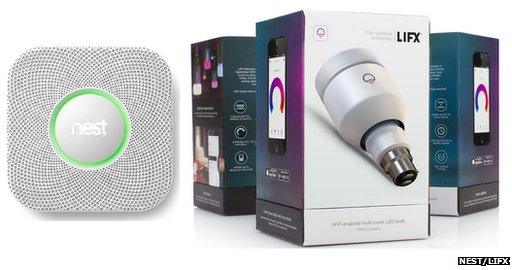
Lifx has made it possible for the Nest smoke alarm to trigger its colour-changing light bulbs
Nest's devices can already be controlled by tablets and smartphones, but its latest move adds further options.
Mr Rogers said pre-arranged tie-ups meant Jawbone's Up wristband's motion sensor could now be used to detect when the owner wakes up in order to trigger the heating system.
He added that Chamberlain's new internet-connected garage door openers could then turn the Nest Learning Thermostat lower when the homeowner left for work.
And if they drove one of Mercedes Benz's new cars, he said, their vehicle would be able to turn the temperature back up again when it estimated they were 30 minutes away from returning.
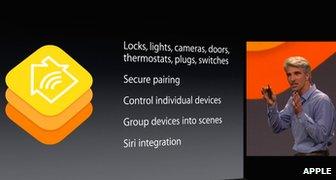
Apple promoted its own smarthome concept - controlled by iOS 8 - at its recent developers' conference
In the case of the Nest Protect smoke and carbon monoxide alarm, Mr Rogers said the ability to make it cause Lifx's LED bulbs to flash red could serve as an alert if an owner was hearing impaired.
The initial line-up of firms linking their products to Nest's also includes Logitech, Whirlpool, the If This Then That (IFTTT) app, and Google itself.
Nest had previously promised not to force owners, external to share their data with Google, but they now have the option to do so.
"The way we think about building out this ecosystem is more than just about connectivity - it's about what are the things you use everyday, and how should they work together," added Mr Rogers.
Nest, however, was not yet ready to discuss how this strategy might apply to Dropcam's line-up of video, sound and window/door-motion sensors, which it is in the process of acquiring for $550m.
- Published7 May 2014

- Published4 April 2014
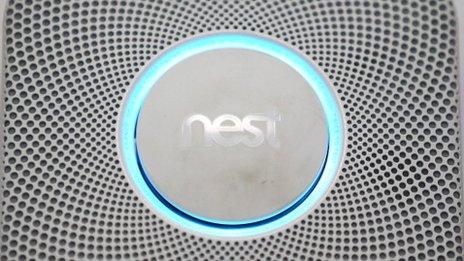
- Published13 January 2014
